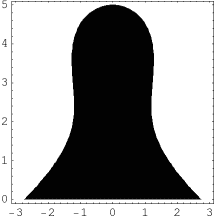| Dror Bar-Natan: Classes: 2002-03: Math 157 - Analysis I: | (262) |
Next: Solution of Term Exam 4
Previous: Class Notes for the Week of March 17 (8 of 8) |
Solve the following 5 problems. Each is worth 20 points although they may have unequal difficulty. Write your answers in the space below the problems and on the front sides of the extra pages; use the back of the pages for scratch paper. Only work appearing on the front side of pages will be graded. Write your name and student number on each page. If you need more paper please ask the tutors. You have an hour and 50 minutes.
Allowed Material: Any calculating device that is not capable of displaying text.
Problem 1. Is there a non-zero polynomial ![]() defined on the interval
defined on the interval ![]() and with values in the interval
and with values in the interval
![]() so that it and all of its derivatives are integers at
both the point 0 and the point
so that it and all of its derivatives are integers at
both the point 0 and the point ![]() ? In either case, prove your
answer in detail. (Hint: How did we prove the irrationality of
? In either case, prove your
answer in detail. (Hint: How did we prove the irrationality of ![]() ?)
?)
 Problem 2. Compute the volume
Problem 2. Compute the volume ![]() of the ``Black Pawn''
on the right -- the volume of the solid obtained by revolving the
solutions of the inequalities
of the ``Black Pawn''
on the right -- the volume of the solid obtained by revolving the
solutions of the inequalities
![]() and
and ![]() about the
about the ![]() axis (its vertical axis of symmetry). (Check that
axis (its vertical axis of symmetry). (Check that
![]() and hence the height of the pawn is
and hence the height of the pawn is ![]() ).
).
Problem 3.
Problem 4.
Problem 5. Do the following series converge? Explain briefly why or why not:
 .
.
 .
.
 .
.
 .
.
 .
.